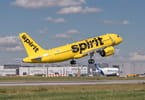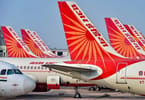Bringing back business for aviation, airports, MICE, and tour operators are the intention of the World Travel & Tourism Council (WTTC). The UK based WTTC has unveiled its second phase of measures to rebuild global consumer confidence to encourage the return of traveling.
Can protocols make travel safe again? WTTC thinks so, but rebuilding.travel is skeptical.
The latest protocols are designed to drive the return of safe travel and enable industries, namely tour operators and convention centers, meetings, and events to thrive once again.
Detailed discussions took place with key stakeholders and organizations to ensure maximum buy-in, alignment, and practical implementation, to set clear expectations of what travelers may experience in the ‘new normal’.
Các thành viên của xây dựng lại.travel group that includes travel leaders from 110 countries applauded the initiative by WTTC as an important step forward for the global travel and tourism industry but warned about using the word “safe”.
Juergen Steinmetz, founder of the group said: “No one can guarantee safety yet when it comes to the virus.” Dr. Peter Tarlow, head of safetourism.com and a member of the rebuilding.travel group suggested replacing safe with “resilience” instead. The word ‘safe” could open up legal challenges for stakeholders Tarlow commented.
Those relating to airports and airlines have been devised following close consultation with WTTC Members such as Iberia, Emirates Group, Etihad and Oman Aviation Group among others, as well as the International Air Transport Association (IATA) and Airports Council International (ACI), to rebuild trust and provide reassurance that airports and airlines will offer safe environments in which to fly once travel restrictions are relaxed.
The welfare of travelers and the millions of people employed throughout the Travel & Tourism sector at the heart of this new comprehensive package of Safe Travels protocols.
Họ cũng cung cấp tính nhất quán cho các điểm đến và quốc gia cũng như hướng dẫn cho các nhà cung cấp dịch vụ du lịch, hãng hàng không, sân bay, nhà khai thác và khách du lịch, về cách tiếp cận mới đối với sức khỏe và vệ sinh trong thế giới hậu COVID-19.
Gloria Guevara, WTTC President & CEO, said: “For the first time ever, the global private sector has rallied around our Safe Travels protocols which will create the consistency needed to allow a re-invigorated Travel & Tourism sector re-open for business.
“Among the most important of these measures are those which will enable the aviation sector to take-off. Aviation’s return is critical to help repower the global economic recovery.
"WTTC aviation protocols were created in close collaboration with ACI and IATA. We thank their leaders Angela Gittens and Alexandre de Juniac for their guidance, as it is vital we restore consumer confidence to get people traveling and flying safely.
“The expertise from large and small tour operators, contributed to defining the new experience via tour operators and visiting event venues again, as defined in the coordination of experts from this segment, through these robust global measures which have been embraced by businesses around the world.”
Angela Gittens, ACI World Director-General said: “Our industry has been brought to a standstill. A balanced and effective restart and recovery of the global travel and tourism sector depends on collaboration among the key participants in this ecosystem and we welcome the ambitious approach taken by the WTTC.
“Collaboration will help to establish a globally-consistent approach to recovery which will be the most effective way of balancing risk mitigation with the need to enable travel and foster economic recovery while also reassuring the traveling public that health and safety remain the overall priorities.”
Alexandre de Juniac, Director General and CEO at IATA said: “COVID-19 is a gamechanger for the travel and tourism sector, requiring us to enhance our approach to health and safety to protect our travelers and workforce. Aviation is the business of freedom and it is vital to enable its restart on a safe basis. IATA is delighted to lend its framework and collaborate with WTTC on the Aviation Protocols as part of its Safe Travels initiative. This is an excellent example of the industry solidarity and cooperation that will be so vital to ensuring a strong recovery for travel and tourism.”
Yuji Akasaka, Japan Airlines President, said: “We would like to thank WTTC for their deep understanding of the aviation industry and for their worldwide support.
“At this moment I think the most important issue is that all members involved in tourism join forces and cooperate to overcome this crisis. Through WTTC’s widespread initiatives, we would like to work not only with the aviation sector but also with the tourism industry as a whole.”
Tuần trước, WTTC unveiled Safe Travels protocols for hospitality and outdoor retail, which were widely endorsed and supported by top CEOs and business leaders globally.
However, earlier this week, WTTC’s unveiled its landmark new global safety stamp to encourage safe travels and the reopening of the Travel & Tourism sector.
Được sự hỗ trợ của Tổ chức Du lịch Thế giới của Liên hợp quốc (UNWTO), the new protocols will recognize businesses and governments worldwide which have adopted them to rebuild confidence among consumers, encourage the return of ‘Safe Travels’ and enable the Travel & Tourism sector to reopen for business.
Drawn up by WTTC Members and based on the best available medical evidence and following guidelines from the World Health Organisation (WHO) and the Centre for Disease Control and Prevention (CDC), the new Safe Travels protocols avoid the emergence of multiple standards, which would only confuse the consumer and delay the sector’s recovery.
Detailed discussions took place with key stakeholders and organizations to ensure maximum buy-in, alignment, and practical implementation, to set clear expectations of what travelers may expect during their next flights in the ‘new normal’.
Bằng chứng từ WTTCBáo cáo Sẵn sàng Khủng hoảng, xem xét 90 loại khủng hoảng khác nhau, nhấn mạnh tầm quan trọng của hợp tác công-tư để đảm bảo rằng các chính sách thông minh và cộng đồng hiệu quả được áp dụng để tạo điều kiện cho ngành Du lịch & Lữ hành linh hoạt hơn.
WTTC divided the new guidance into four pillars including operational and staff preparedness; ensuring a safe experience; rebuilding trust and confidence; innovation; and implementing enabling policies.
Các biện pháp được công bố hôm nay bao gồm:
Sân bay
- Enhanced cleaning including to self-service equipment, baggage trolleys, counters, buggies, security checkpoints, washrooms, elevators, handrails, boarding areas, and common areas with a specific focus on high-frequency touch points
- Provide personal protection equipment (PPE) to staff, such as masks
- New signage and announcements to limit interaction and queuing at touchpoints
- Possible pre-arrival health risk assessment to prevent delays upon arrival
- Reduce passenger touchpoints through online check-in before departure, use of self-check-in kiosks and bag drop, home-printed bag tags, greater use of biometric e-gates and boarding card reading at gates
- If entry-exit screening is mandated, it should be carried out in a non-intrusive, walkthrough manner, through full-body infrared scanners using handheld infrared thermometers, and ear gun thermometers
- Enhanced food safety and hygiene at restaurants, with prepacked foods to avoid handling of food at buffets
- Possible redesign of immigration halls together with governments and airlines to speed up procedures
- Where declarations are required upon arrival, electronic options should be used to minimize contact; ideally using contactless processes.
Các hãng hàng không
- Provide personal protection equipment (PPE) to staff such as masks
- Reduce passengers’ touchpoints through online check-in before departure, use of self-check-in kiosks and bag drop, home-printed bag tags, greater use of biometric e-gates and boarding card reading at gates
- Provide approved hand sanitizers as appropriate based on high-traffic areas, such as check-in and boarding areas
- Revisited guidance for cleaning teams for all areas of the plane including washrooms, as well as check-in and boarding areas, with a specific focus on high-frequency touchpoints
- Consider boarding from the back of the plane to the front, window to aisle
- Limit movement in the cabin as much as possible
- Retrain crew and frontline staff regarding infection control and hygiene measures
- Enhanced sanitation, disinfection, and deep cleaning practices for coaches and other vehicles
- Focused cleaning on high-frequency touchpoints, including handrails, door handles, tables, onboard toilets, air conditioning filters, overhead lockers and headsets
- Pre-allocated seating plans with no rotation
- Limit physical contact and queuing where possible
- Explore staggered timing for access to venues, hotels and restaurants among others
- Health, sanitation, disinfection and hygiene and food safety protocols at partner restaurants
- Establish with partners and suppliers including shops, showrooms, tasting venues/shops, museums, shows theatres, concert halls, factories and farms, that they follow likely protocols
- Implement physical distancing for seating distribution and aisles, utilizing government guidance if available. Create visual support to show intent as appropriate.
- Reduce venue capacity limits for participants as appropriate and required by local legislation
- Distinguish between different areas of risk in the venue
- Consider the pre-arrival risk assessment questionnaire for participants
- Limit physical interaction and possible queuing at reception and registration using advance registration to enhance participant flow
- Create isolation units outside the venue where possible for those showing COVID-19 symptoms
Additional and separate measures for the Cruise sector and insurance businesses amongst others, are currently in development and will be announced in due course.
Theo WTTC’s 2020 Economic Impact Report, during 2019, Travel & Tourism was responsible for one in 10 jobs (330 million total) WTTC recently applauded the EU initiative
ĐIỀU NÊN rút ra từ bài viết này:
- Those relating to airports and airlines have been devised following close consultation with WTTC Members such as Iberia, Emirates Group, Etihad and Oman Aviation Group among others, as well as the International Air Transport Association (IATA) and Airports Council International (ACI), to rebuild trust and provide reassurance that airports and airlines will offer safe environments in which to fly once travel restrictions are relaxed.
- A balanced and effective restart and recovery of the global travel and tourism sector depends on collaboration among the key participants in this ecosystem and we welcome the ambitious approach taken by the WTTC.
- “Collaboration will help to establish a globally-consistent approach to recovery which will be the most effective way of balancing risk mitigation with the need to enable travel and foster economic recovery while also reassuring the traveling public that health and safety remain the overall priorities.






















